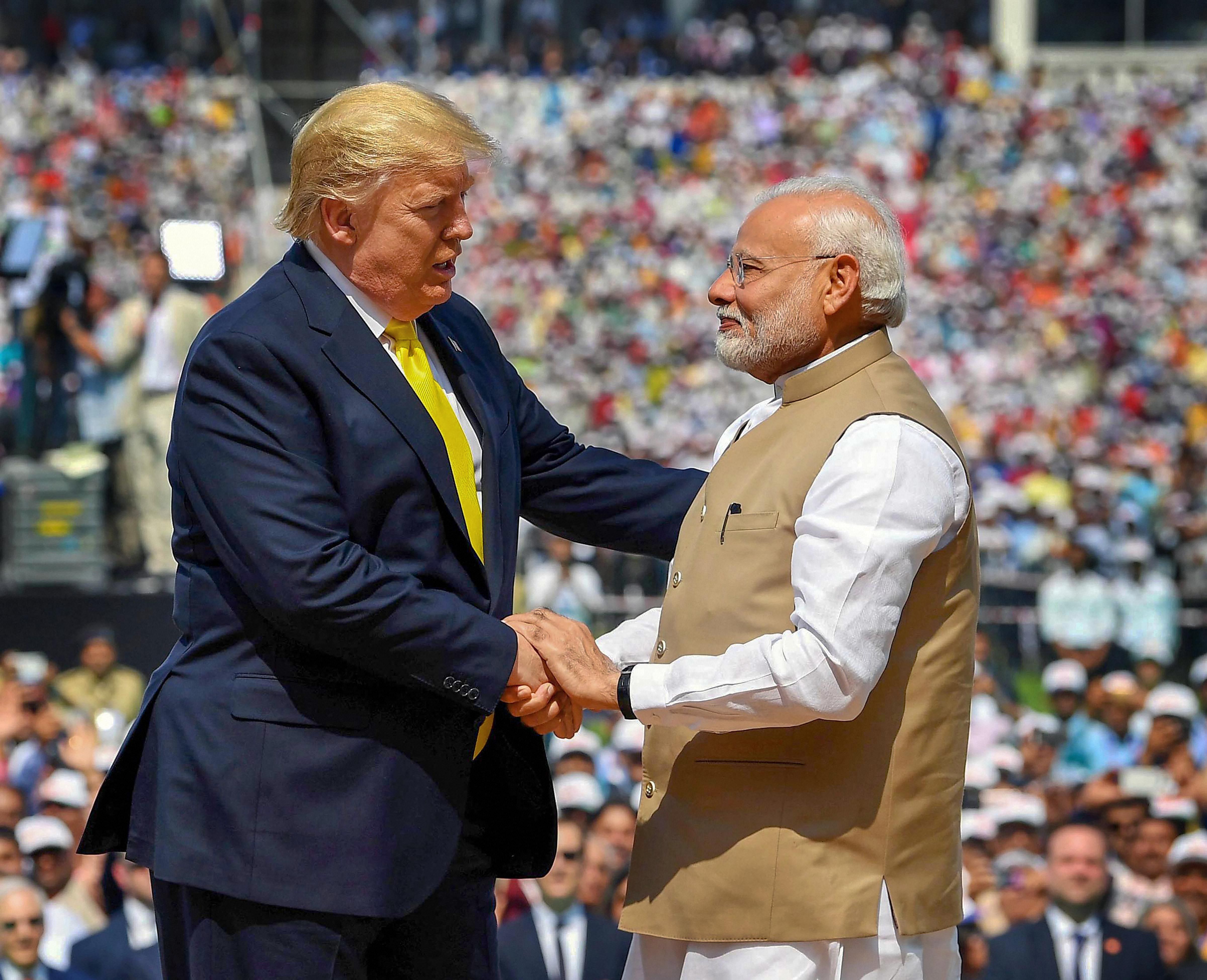
Prime Minister Narendra Modi is “not in a good mood” over tension along India-China disputed boundary, the United States President Donald Trump said after claiming to have spoken to him over phone – a conversation, which, according to New Delhi, never took place.
New Delhi dismissed Trump’s claim that he had of late spoken to Modi about escalation of tension along the disputed boundary between India and China. A source in New Delhi pointed out that the Prime Minister and the US President had last spoken to each other over phone on April 4 – several weeks before the Chinese People’s Liberation Army (PLA) personnel attacked Indian Army soldiers on the northern bank of the Pangong Tso lake in eastern Ladakh on May 5, triggering the current spell of tension along the Line of Actual Control – the de facto border between the two nations.
“They have a big conflict going with India and China. Two countries with 1.4 billion people (each). Two countries with very powerful militaries,” Trump told journalists at the White House in Washington D.C. early on Friday (Indian Standard Time). “And,” the US President went on, “India is not happy, and probably China is not happy. But I can tell you, I did speak to Prime Minister Modi. He's not -- he's not in a good mood about what's going on with China.”
Read more at: https://www.deccanherald.com/international/china-rejects-trump-s-offer-to-mediate-in-sino-india-border-standoff-says-no-need-for-third-party-intervention-843186.html
Trump on Wednesday posted on Twitter that the US had informed both India and China that it was “ready, willing and able” to “mediate” between the two nations or play the role of an arbitrator to resolve the border dispute they had since long been embroiled in.
His offer got a cold shoulder from New Delhi, which pointed out on Thursday that India and China had “established mechanisms both at military and diplomatic levels” to peacefully resolve through bilateral dialogue any “situation, which might arise in border areas between the two nations”. Neither did his offer find any taker in Beijing. “The latest dispute can be solved bilaterally by China and India. The two countries should keep alert on the US, which exploits every chance to create waves that jeopardize regional peace and order,” Wang Wenwen, a columnist, wrote in an article published in the Global Times, a newspaper run by the Communist Party of China.
The US President however reiterated his offer early on Friday.
“I would do that. You know, I would do that. If they -- if they thought it would help if I were the mediator or the arbiter, I would do that. So, we’ll see,” he said, in response to a query from a journalist early on Friday.
His earlier offer to mediate between India and Pakistan to resolve the issue of Kashmir was rejected by New Delhi.
The US President’s claim about his talks with the Prime Minister came as a surprise to New Delhi.
Sources in New Delhi that the last conversation between Modi and Trump had taken place on April 4, when they had discussed the export of the Hydroxychloroquine (HCQ) drug from India to the US. New Delhi had imposed a ban on export of the HCQ, but had later relaxed it after Trump had requested Modi to allow the US to procure the drug from India to help treat the COVID-19 patients.
The tension along the disputed boundary between India and China started on May 5 when the Chinese People’s Liberation Army personnel attacked Indian Army soldiers with sticks and stones in an area perceived in New Delhi to be well within the LAC’s Indian side. They also demolished on May 6 some makeshift structures built by Indian Army soldiers. The Chinese PLA followed up by building a bunker in order to restrict the access to an area where Indian Army soldiers regularly patrolled. The PLA later deployed nearly 5,000 soldiers in a large camp set up recently at Galwan Valley within the territory claimed by China – obviously to support the smaller number of troops, who transgressed the LAC in several locations and entered into the areas claimed by India. The Indian Army also rushed additional troops “in adequate numbers” in response to the deployment by the Chinese PLA. The build-ups by both sides escalated tension along the LAC and the military officials and diplomats of both sides are now holding discussions to defuse the situation.
